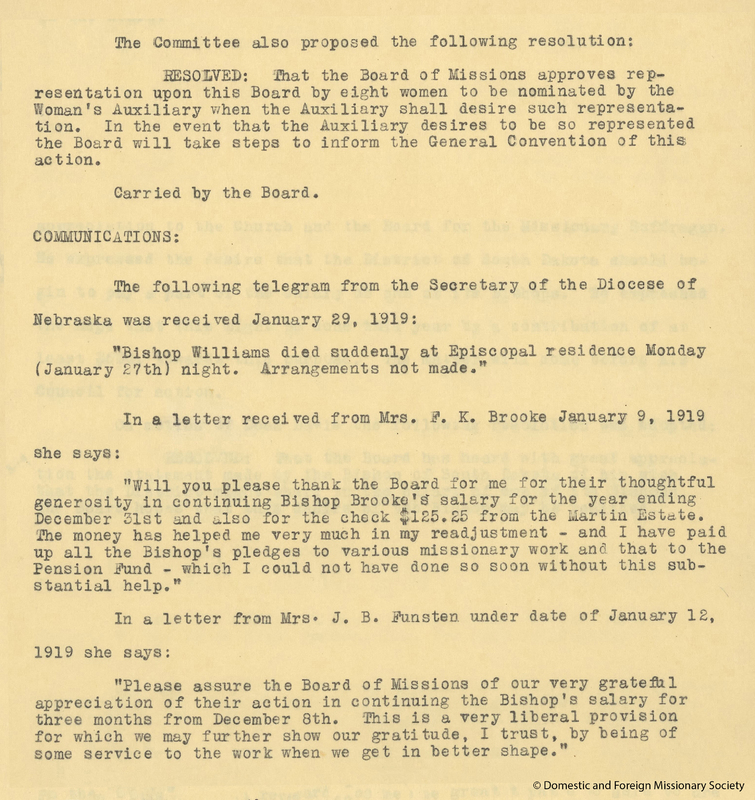Council Representation
As women gained respect as leaders within their communities and through the work of the Woman’s Auxiliary and the United Thank Offering, calls were increasingly made for them to realize true representation within the decision making structures of the national church. A first attempt toward more equal representation was made in 1919, when the General Convention created the National Council and initially included 8 female representatives to the Council, to be elected at the Triennial Meeting. However, by the time the resolution was finalized, the language explicitly stipulated that members of Council were to be men.
While women were largely excluded from decision-making on a national level, they were allowed to serve on Council committees with limited influence as they served without voice or vote.
Report of the Committee Appointed by the Board [of Missions] to Confer with Committee Appointed by Woman's Auxiliary. This report, from the February 1919 minutes of the Board of Missions, recommends a new structure for the Woman's Auxiliary.
- Board of Missions, February 1919
Resolution requesting an amendment to the canons of the church to permit women to sit on the Board of Missions. - Board of Missions, November 1919
Resolution requesting that the Woman's Auxiliary be made an auxiliary to the Presiding Bishop's Council. - Board of Missions, February 1920
Resolution constituting the Woman's Auxiliary as an auxiliary to the Presiding Bishop and Council.


